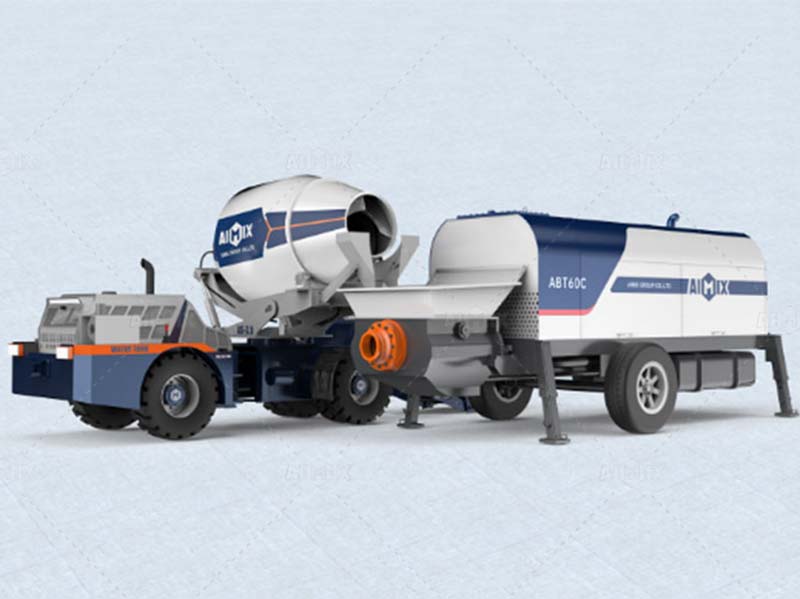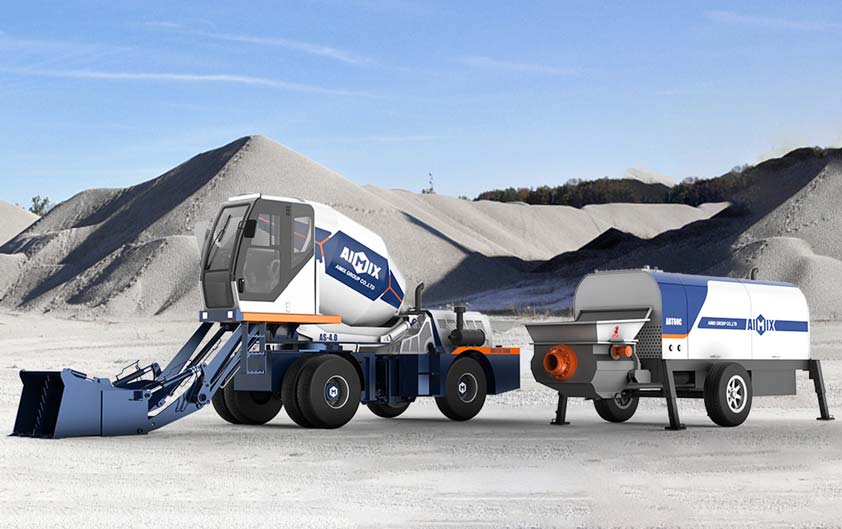In the dynamic landscape of industrial construction in the Philippines, selecting the right equipment can significantly impact the efficiency, cost-effectiveness, and overall success of a project. Among the most vital pieces of machinery are the AIMIX concrete mixer pump and the concrete self loading mixer. Both serve the essential function of mixing and delivering concrete on-site, but their features, applications, and cost implications differ. Understanding these differences is crucial for making an informed decision that aligns with project goals and local conditions.
Understanding the Equipment: Features and Capabilities
The first step in determining which equipment is better for industrial construction in the Philippines is understanding the distinct features and capabilities of each.
Concrete Mixer Pump: Versatility and Precision
The concrete mixer pump is a powerful piece of machinery that combines the functions of mixing and pumping concrete. This dual functionality allows it to deliver concrete to precise locations, even in challenging environments or when dealing with complex structural designs. It is particularly valued for its ability to pump concrete over long distances, making it ideal for high-rise buildings and expansive industrial projects.
Moreover, the mixer pump is versatile, handling various concrete types, including those with a higher aggregate content. Its compact design allows it to be used in confined spaces, which is often a necessity in densely populated urban areas. The ability to control the flow rate of concrete precisely enhances the quality of the final structure, reducing the risk of weak spots or inconsistencies.

Self-Loading Concrete Mixer: Independence and Efficiency
On the other hand, the self-loading concrete mixer is designed for maximum autonomy. It integrates the functions of loading, mixing, transporting, and discharging concrete, all within one machine. This independence from external loading equipment makes it particularly efficient on sites where logistical support might be limited, such as remote or underdeveloped areas.
The self-loading mixer is equipped with a rotating drum that can mix concrete while the machine is in motion, allowing continuous production and delivery of concrete. Its ability to measure and control the mix proportions automatically ensures consistent quality across batches. This self loading concrete mixer in the Philippines is especially beneficial for projects that require frequent movement across the site, such as road construction or large-scale infrastructure development.
Application and Suitability in Philippine Industrial Construction
When deciding between a concrete mixer pump and a self-loading concrete mixer, it is essential to consider the specific needs of the project and the environmental conditions in the Philippines.
Factors Influencing Equipment Choice in the Philippines
The Philippines presents unique challenges for industrial construction, including varied terrain, frequent weather changes, and the need for rapid urbanization. In densely populated urban centers like Metro Manila, space constraints and traffic congestion are significant concerns. Here, the compact size and pumping capability of a concrete mixer pump offer distinct advantages, allowing for efficient operations without causing disruptions.
Conversely, in rural or remote areas, where access to ready-mix concrete is limited, the self-loading concrete mixer shines. Its ability to produce concrete on-site eliminates the need for concrete delivery, reducing dependency on external suppliers. This feature is particularly advantageous in regions where infrastructure is still developing and transport networks may be unreliable.

Project-Specific Needs: Matching Equipment to Requirements
Matching the equipment to the specific requirements of the project is crucial. For projects that involve complex structures, such as high-rise buildings or industrial plants, where precision and the ability to pump concrete vertically are paramount, the stationary pumpcrete philippines is the better choice. Its ability to deliver concrete accurately to hard-to-reach areas ensures that the structural integrity of the building is maintained.
In contrast, for large-scale infrastructure projects such as road construction, where the focus is on covering large areas with consistent concrete quality, the self-loading concrete mixer offers unparalleled efficiency. Its mobility and self-sufficiency reduce downtime and streamline the construction process, leading to faster project completion.
Cost Implications and Operational Efficiency
Beyond the technical capabilities and suitability, cost considerations play a significant role in determining the best equipment for industrial construction.
Initial Investment and Maintenance Costs
The initial cost of a concrete mixer pump is generally higher than that of a self-loading concrete mixer, primarily due to its advanced pumping capabilities. However, this higher investment can be justified by the savings in labor costs and the reduction in concrete waste, particularly on complex projects that require precise concrete placement.
Maintenance costs also vary between the two. The concrete mixer pump, with its intricate pumping system, may require more frequent maintenance to ensure reliability, particularly when used continuously on large projects. The self-loading concrete mixer, while more straightforward in design, also requires regular upkeep, especially in challenging environments where dust and debris are prevalent.
Long-Term Operational Efficiency and ROI
In terms of long-term operational efficiency, the choice between the two largely depends on the nature of the projects the equipment will be used for. A concrete mixer pump may offer a higher return on investment (ROI) in urban settings where its precision and pumping capabilities can be fully utilized. The ability to complete projects faster and with fewer errors translates into cost savings and potential profit increases.
On the other hand, the self-loading concrete mixer offers significant ROI in projects where mobility and on-site concrete production are critical. The reduction in material transportation costs and the ability to maintain consistent concrete quality across different site locations enhance its value proposition. Choose aimix equipment with high ROI, find equipment here: https://aimixconcretesolution.com/.
Conclusion
In conclusion, both the concrete mixer pump and the self-loading concrete mixer offer distinct advantages for industrial construction in the Philippines. The decision between the two should be based on a careful analysis of project requirements, environmental conditions, and cost implications. By understanding the unique features of each piece of equipment and how they align with specific project needs, construction companies can optimize their operations, reduce costs, and ensure the successful completion of their projects.
